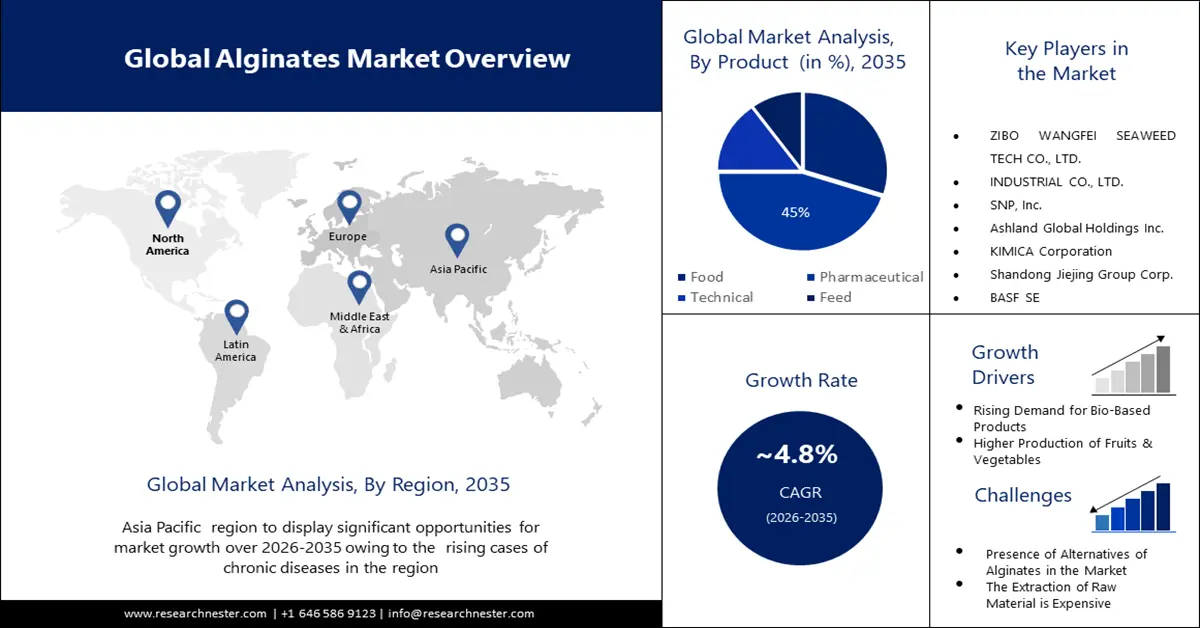Alginates Market Outlook:
Alginates Market size was valued at USD 778.8 million in 2025 and is likely to cross USD 1.24 billion by 2035, expanding at more than 4.8% CAGR during the forecast period i.e., between 2026-2035. In the year 2026, the industry size of alginates is assessed at USD 812.44 million.
The market is driven by the expanding use of alginate in biomedical applications, such as tissue engineering, wound dressing, and drug delivery systems. Growing demand for clean-label and organic food products also pushes manufacturers to adopt alginate as a natural stabilizer and thickener. Moreover, as per OEC 2022, alginic acid export expanded up to USD 14.4% between 2021 and 2022. The global trade of alginic acid, the primary raw material for producing various alginate products, fosters innovation and encourages development of specialized alginate formulations. OEC further states that, in 2022, alginic acid world trade was valued at USD 476 million, with China being the top exporter registering USD 189 million worth exports, and U.S. ranked the first with USD 8 million worth imports.
Recent studies in the market have focused on its potential for advanced medical purposes, highlighting its versatility, and biocompatibility. For instance, in May 2024, IFF Pharma Solutions, unveiled groundbreaking study results for NovaMatrix portfolio of ultrapure alginate biopolymers intended to revolutionize regenerative medicine and 3D cell culture applications. Key trends shaping the market include rising preference for biodegradable and eco-friendly materials, particularly in packaging and industrial applications. Innovation in alginate-based bioplastics and advanced drug delivery systems presents lucrative opportunities to the market. Application in textile and paper industries for printing and coating enhancements to improve fabric quality and surface properties is also driving the global market growth significantly.


